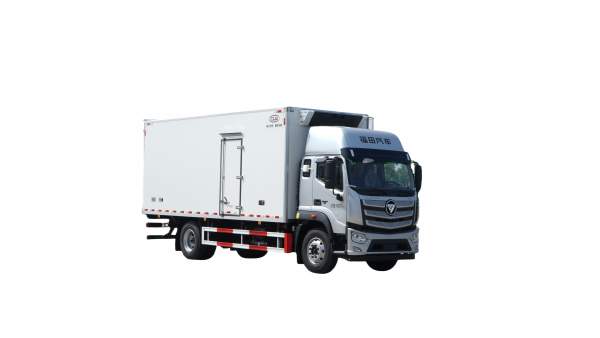Exploring Fuel Truck Cab Configurations A Comprehensive Guide

Introduction
Fuel trucks play a crucial role in the transportation and delivery of fuel to various locations, such as gas stations, airports, and industrial facilities. These specialized vehicles are equipped with large tanks to store and transport different types of fuel, including gasoline, diesel, and aviation fuel. One key component of a fuel truck is its cab configuration, which refers to the layout and design of the driver's compartment. In this article, we will explore the various cab configurations commonly found in fuel trucks and discuss their features, advantages, and applications.
1. Standard Cab Configuration
The standard cab configuration is the most common layout found in fuel trucks. It typically consists of a single row of seating for the driver and possibly one passenger. The driver's seat is positioned in front of the steering wheel, with easy access to the vehicle's controls and instrumentation. This configuration provides a simple and straightforward design that is easy to operate and maneuver.
The standard cab configuration is well-suited for fuel trucks that are used for short-distance deliveries and frequent stops. The compact layout allows for easy entry and exit from the vehicle, making it ideal for urban areas with heavy traffic. Additionally, the single-row seating arrangement helps maximize storage space in the cab for essential items such as paperwork, safety equipment, and personal belongings.
2. Extended Cab Configuration

The extended cab configuration is a variation of the standard layout that includes additional seating behind the driver's seat. This configuration is commonly found in larger fuel trucks that require extra passenger capacity for crew members or technicians. The extended cab provides seating for up to four passengers, making it suitable for long-distance deliveries or maintenance trips.
In an extended cab configuration, the driver's seat is positioned in the front row, with a bench seat or individual seats located behind it. This layout allows for increased passenger comfort and convenience, as well as improved communication between the driver and crew members. The extended cab configuration is often preferred for fuel trucks that require a team-based approach for efficient operations.
3. Crew Cab Configuration
The crew cab configuration is designed to accommodate a larger number of passengers, typically up to six individuals. This layout is well-suited for fuel trucks that operate as mobile workstations or service vehicles, requiring a crew of technicians or specialists to perform maintenance, repairs, or inspections on-site. The crew cab provides ample seating capacity for the entire team, along with additional storage space for tools, equipment, and supplies.
In a crew cab configuration, the driver's seat is located in the front row, with a second row of seating directly behind it. The rear seats can be configured as a bench seat or individual seats, depending on the specific requirements of the operation. The crew cab layout promotes collaboration and teamwork among crew members, enhancing overall productivity and efficiency.
4. Special vehicle supply chain management is designed for fuel trucks that require overnight stays or extended periods of operation on the road. This layout includes a comfortable sleeping berth behind the driver's seat, providing a restful space for the driver to recharge and recuperate during long-haul trips. The sleeper cab configuration is essential for fuel trucks that transport fuel across long distances or remote locations, where access to lodging facilities may be limited.
In a sleeper cab configuration, the driver's seat is positioned in the front row, with a bunk bed or sleeping compartment located directly behind it. The sleeping berth may include amenities such as a mattress, storage compartments, and ventilation systems for added comfort. The sleeper cab layout enables drivers to adhere to mandated rest periods and maintain optimal alertness while on the road.
5. Custom Cab Configurations
In addition to the standard, extended, crew, and sleeper cab configurations, fuel trucks can be customized to meet specific operational requirements and preferences. Custom cab configurations may include modifications such as ergonomic seating arrangements, enhanced visibility features, advanced communication systems, and integrated technology solutions. These customizations are tailored to improve driver comfort, safety, and efficiency during fuel truck operations.
Custom cab configurations can also incorporate specialized equipment or accessories to support unique applications, such as hazardous material transports, off-road operations, or extreme weather conditions. By working closely with manufacturers and designers, fuel truck operators can create customized cab layouts that align with their operational needs and industry standards. Custom cab configurations offer flexibility and versatility in adapting fuel trucks to diverse environments and challenges.
Conclusion
Fuel truck cab configurations play a critical role in determining the functionality, comfort, and safety of these specialized vehicles. By understanding the different cab layouts available, fuel truck operators can select the configuration that best suits their operational requirements and preferences. Whether opting for a standard, extended, crew, sleeper, or custom cab configuration, it is essential to prioritize driver comfort, passenger capacity, equipment accessibility, and operational efficiency.
As the demand for fuel transportation continues to grow, fuel truck manufacturers are constantly innovating and evolving cab configurations to meet the evolving needs of the industry. By staying informed about the latest trends and advancements in fuel truck design, operators can enhance the performance and reliability of their fleet. Ultimately, choosing the right cab configuration is essential for maximizing the effectiveness and sustainability of fuel truck operations in a competitive market landscape.
